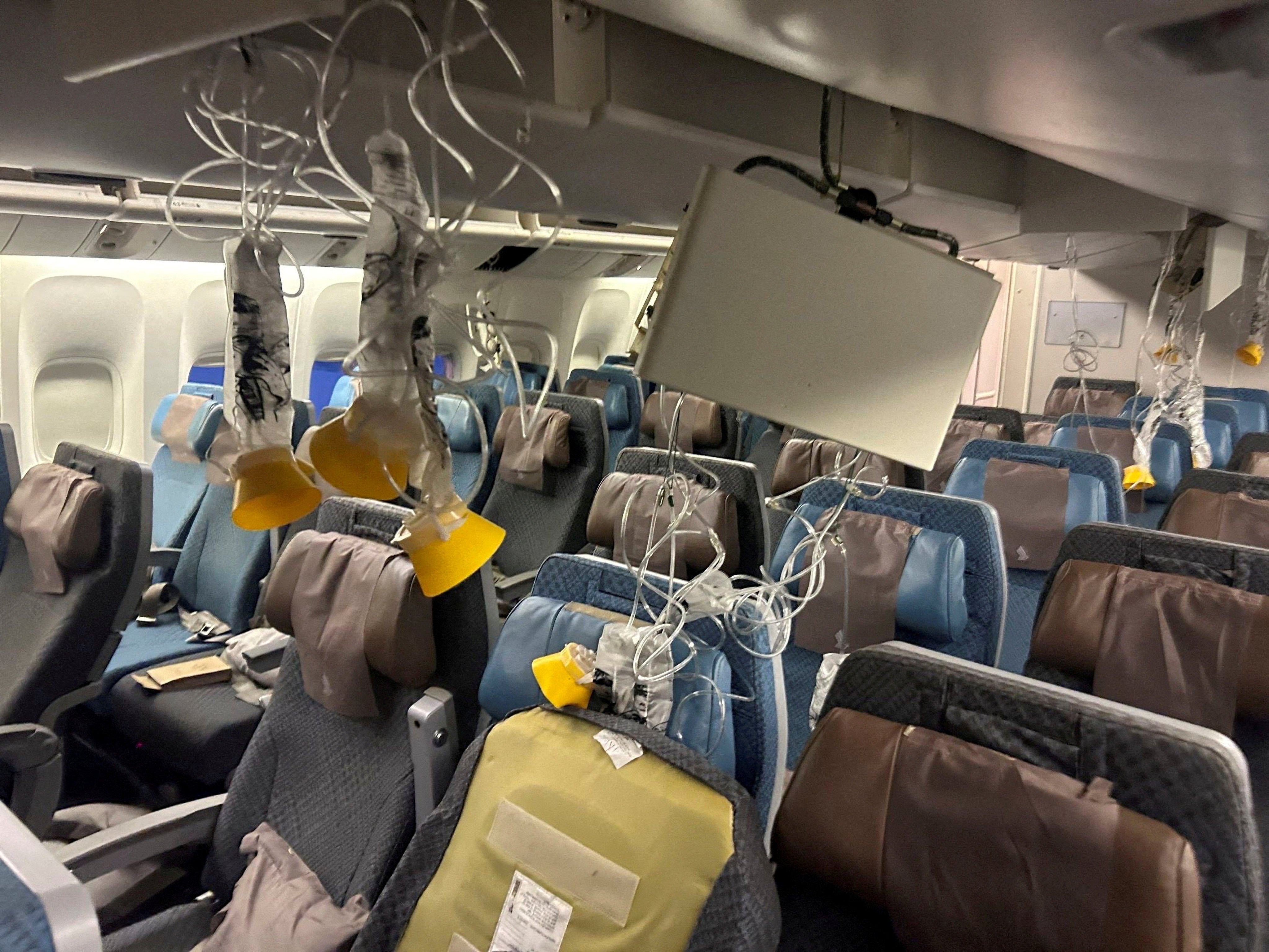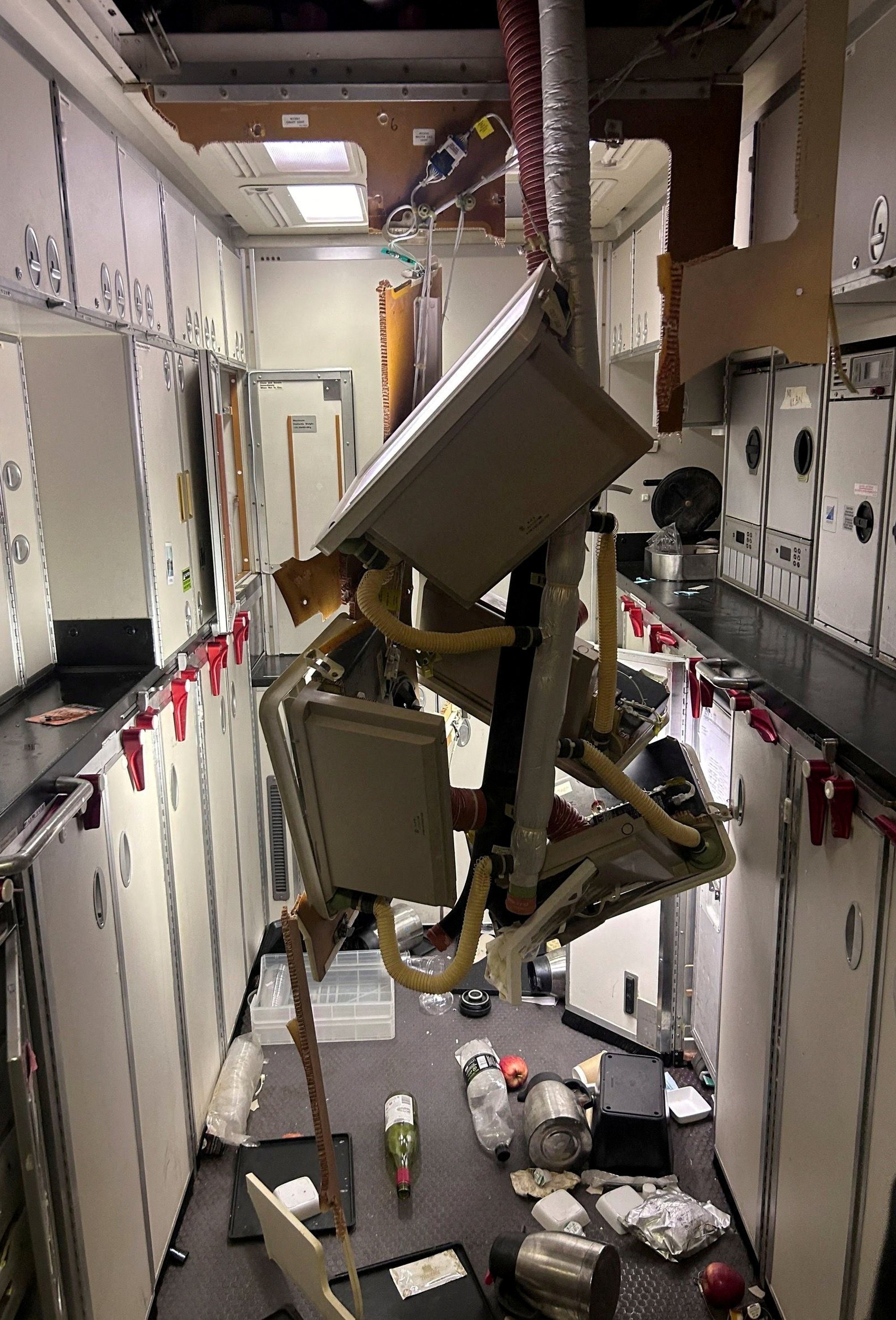Singapore Airlines turbulence-hit passengers still suffering, 1 year on
The catastrophic 54-metre drop in just 4.6 seconds changed lives forever, as medical aftereffects and legal battles continue

A year after Singapore Airlines flight 321 was struck by severe turbulence, many passengers are still struggling with the trauma, as medical evaluations and efforts to secure compensation from the airline continue.
The Boeing 777, en route from London to Singapore, encountered violent turbulence on May 21, forcing an emergency diversion to Bangkok’s Suvarnabhumi Airport. A British man died and several other passengers among the 211 on board were injured in the incident.
Inside the battered cabin, scenes of chaos unfolded. Food and luggage were scattered across the aisles, oxygen masks dangled from the ceiling and electrical panels were dislodged. Passengers sat in shock as medical teams in Bangkok treated injuries, most of which involved the head or spine. More than a dozen people required surgery.
Among the injured was New Zealander Philip Whitehead, who had just returned to his seat from the toilet when the turbulence struck.
“There was no time to get the seat belt on, and I woke up on the floor in a pool of blood,” Whitehead recalled. He suffered a broken neck and back and later had to undergo spinal surgery.

“The bone is still really fragile so I have to keep my movements really conservative so I don’t damage myself,” he said.
A preliminary report by Singapore’s transport ministry found that the jetliner dropped 54 metres (178 feet) in just 4.6 seconds due to rapid gravitational force changes, triggered by an “uncommanded increase in aircraft altitude and airspeed”.
The incident prompted Singapore Airlines to overhaul its safety protocols. The carrier has suspended hot drinks and in-flight meal services whenever the seat belt sign is illuminated. Cabin crew were also instructed to remain seated and strapped in during such periods.
‘Thought they were going to die’
Passengers have since sought compensation for the ordeal. Australian law firm Carter Capner Law, which specialises in aviation accident claims, is leading efforts to secure reparations.
The Australian law firm represents 11 passengers and is assessing claims for others who, although physically unharmed, developed post-traumatic stress disorder (PTSD).
“Many of our clients exhibit PTSD symptoms as a result of this terrifying mid-air experience,” said Peter Carter, the company’s director. “They thought they were going to die.”
Carter is pursuing compensation of up to US$1 million for PTSD sufferers. While he acknowledged that payouts would require demonstrable physical effects caused by the condition, he said he was “optimistic” of success.
Singapore Airlines offered those with serious physical injuries compensation last June: US$25,000 for the most severely injured and US$10,000 for other passengers.
“While some passengers have accepted these offers, we continue to engage with the others directly or via their appointed representatives,” the airline told The Straits Times.
Under the Montreal Convention, Singapore Airlines is liable for up to US$170,000 per passenger in cases of injury or death.
However, there is precedent for larger payouts.
In 2000, after 83 people died in a Singapore Airlines crash at Taiwan’s Taoyuan airport, the airline offered US$400,000 to each victim’s family. Some families rejected the offer and secured undisclosed settlements in US courts, as the aircraft was bound for Los Angeles.